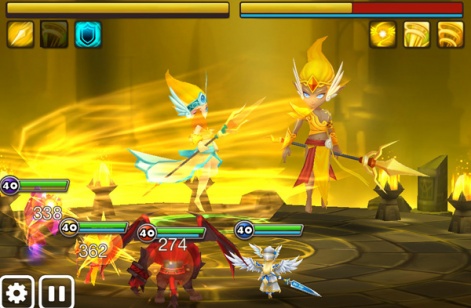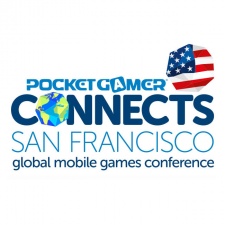Marking our first conference in North America, Pocket Gamer Connects San Francisco is happening on 7-8 July at The Village.
And tickets are still available.
So to give you a hint at what you can expect, we're shining the spotlight onto our speakers to provide a deeper look at the personalities who will be taking the stage.
Simon Chow is business developer manager at Hong Kong-based, Australian floated developer and publisher Animoca Brands.
At Pocket Gamer Connects San Francisco 2015, he's talking about 'Which Mobile Gaming Companies should work with Brands and Why' on 8 July from 11.55am.
PocketGamer.biz: What do you think has be the biggest story in the mobile gaming industry of 2015 so far?
Simon Chow: What strikes me the most in 2015 is that games are more and more globalised.
For example, when we are scanning the top charts of different countries, the chance of finding games developed in different countries is higher and this is also true in previously difficult to reach markets such as Japan and the US.

Taking the US as an example, as compared with 2014, we've noticed that games developed by Asian developer are finding its ways to the US top charts. In particular, there are now 9 games from China alone currently in the top 100 grossing rank in US, like uCool's Heroes Charge and Elex's Clash of King.
Not to mention those from Korean developers such as DomiNations from Nexon and Summoners War from Com2uS.
Both of these have been in the US top grossing chart for a reasonable amount of time, which signifies that the mobile gaming world is now flat. This opens more doors for good quality games.
We're starting to see the growth in mobile gaming revenue slow down in western markets, while in most Asian countries it's still very high. Is this changing the way you approach the sector?
We're definitely putting more and more focus in Asia as it's such a big chunk of the pie now that no-one should overlook its significance. According to Newzoo, it constituted around 50% of the total global app revenue in 2014 and is growing at 20% year-on-year.
Similarly, China has just passed US to become Apple's biggest iPhone market. Coupled by the general economic growth in the region, I believe Asia will remain important in the near future.
The Asian market is becoming more and more competitiveSimon Chow
That said, there are two things we're trying to work around with the surge of the Asia and Asian developers.
First of all, in terms of consolidating our presence in Asia, we're riding on a number of popular IPs, particularly some famous Japanese cartoon/animation IPs which has great influence in Asia, to help us to draw in more gamers to our portfolio.
For example, one of our Doraemon game, which is one of the most famous cartoon IP in Japan, managed to get us around 4 million downloads in a short time after it launched earlier this year, with comparatively little marketing spent.
Secondly, given the fact that the Asian market is becoming more and more competitive, we have noticed that the quality of the games developed by these Asian developers are getting much better as well.
As a result, we are currently also working with a number of Asian developers to help them to publish their games in the western markets, by levering on our local marketing channels, relationship with the platforms, understanding of the local players and sometimes even by introducing some of our IPs which helps the game better appeal to audience in the west.
Such as we're working quite closely with Neocyon and Gravity, two major developer in Korea, to bring their mobile version of the Ragnarok Online franchise to the west.
Brands and celebrities continue to get more important. Is this a good thing for mobile gaming?
This is definitely both a good and bad thing for mobile gaming. The good thing is that it opens new doors for us to further increase our reach to potential gamers, especially when some of the more traditional UA channels has become so crazily expensive.
For example, we have been working with Garfield very closely over the past few years, and as a matter of fact, our Garfield games have got over 40 million download so far, thanks to the brand at large.

Needless to say first of all, it's easier to appeal to the eyeballs of the platforms for potential featuring with a famous brand, also people talks and writes about it from time to time because they like the brand, so the social viral effect and conversion from impression to install is generally better than a non-branded game which attributes to such a large download volume.
Also a substantial part of it comes from organic search which is also impressive as compared with a normal non-branded game.
Getting a brand can also be risky and detrimental, especially to those who might have relatively limited experience.Simon Chow
On the other hand, getting a brand can also be risky and detrimental, especially to those who might have relatively limited experience in dealing with brands. As an extreme example, paying multi million USD to license the IP of Mickey Mouse for a zombie apocalyptic blood scattering ARPG game maybe a risky deal because the demographic doesn't match plus it violates the brand's DNA as well.
(Though it's less likely to happen as I'm sure the game would be rejected by Disney the second it is proposed.)
While this example is extreme it somehow illustrate the importance of which one has to know where the true potential really lies, not just from the developer standpoint but also from the IP holder and the core fans' perspective to make the deal makes sense.
As the commercial expectation varies a lot with various set of deal parameters, such as licensing territories, terms, exclusivity, media support expectation ... .etc.
Thus, the essence of making a commercially reasonable brand licensing deal lies on an important criteria that one should understand reasonably well the compatibility of the core group of the game and the brand in terms of their demographic and geographic, and furthermore how the game matches the brand's DNA, which is vital in order for fans to find such a game engaging.
There's lots of hype about wearables, VR and AR at the moment. Do they excite you as gaming platforms?
In my opinion, wearables and VR will be interesting for a more engaging gaming experience for console/PC games, but personally I would be skeptical they will become widely popular on mobile in the near future. It's just against the intrinsic nature of what people are expecting from a mobile game.
Similarly, in the case of using the accelerometer, not many games which use the accelerometer as their main method control have been top grossing.
I'm skeptical wearables, VR and AR games will become widely popular on mobile in the near future.Simon Chow
As with wearables, I believe the reason is people think it looks funny to swing or tilt their mobile when they are on the street. They might be willing to try it for fun for a couple of times, but it's hard to sustain their interest.
Also it's somewhat dangerous to have such a gaming experience on the street, for example where you might have less or no awareness on your surroundings (e.g. traffic condition)
That said I think it makes more sense for these type of games to be played at home, probably with a console, where you don't look so funny. Likewise, Xbox Kinect and Wii, which enable people to interact with the virtual world by moving their bodies are very popular in the home environment, which supports my theory.
Nonetheless for mobile game developers, these new sectors might qualify some good stories to be told to raise funding, especially leveraging the hype.
What's been your favourite game of 2015 so far. Why?
If the question is about the mobile game I personally like the most now - off top of my head I'd probably pick Monument Valley.
This caught my eye the moment I saw a guy playing this when we were lining up in the supermarket one day. The graphic style is so clean and unique while also looks familiar, which intrigued me.

Aside from the artwork, the levels are also very impressive. It's nicely designed so that you find each level difficult enough that one needs to spend time on but not so difficult that you'll need to always look for walkthroughs and guides to continue the game, which could make you feel frustrated.
I found myself relaxed playing this game, especially thanks to the enjoyable storyline. And, as different from most of the freemium games designed nowadays, Monument Valley is designed so that most of the players are assumed to be able to finish the game in a reasonable amount of time.
Also I admire the fact that the development team wasn't given any timeline or budget to develop this game, and instead they were just told to focus on "making a high-quality product", which is something people talk about but few can accomplish.
What can you reveal about the talk you're giving at Pocket Gamer Connects San Francisco 2015?
To some degree I've answered this in the previous questions, but specifically I'll be talking in more detail about how we are working with various brands for our games.


















